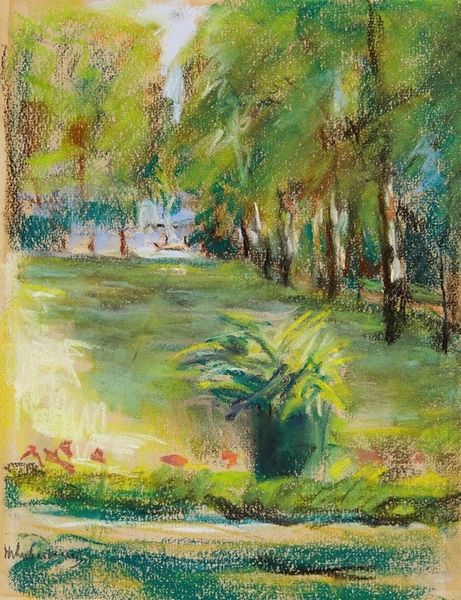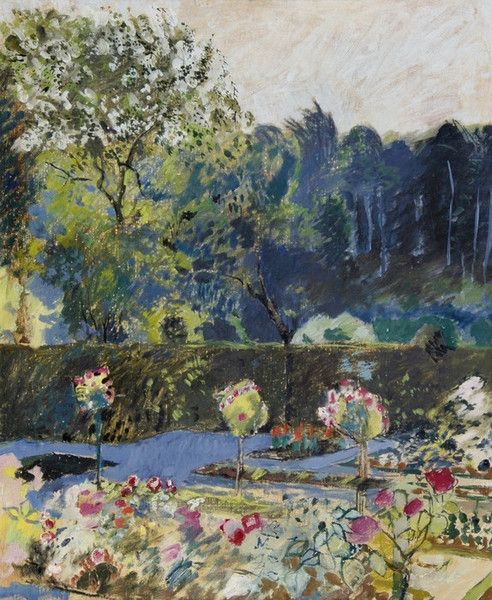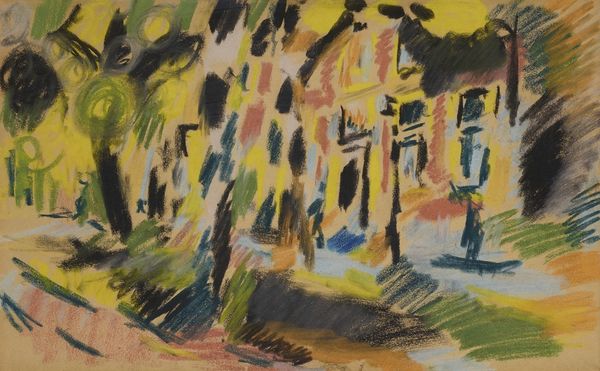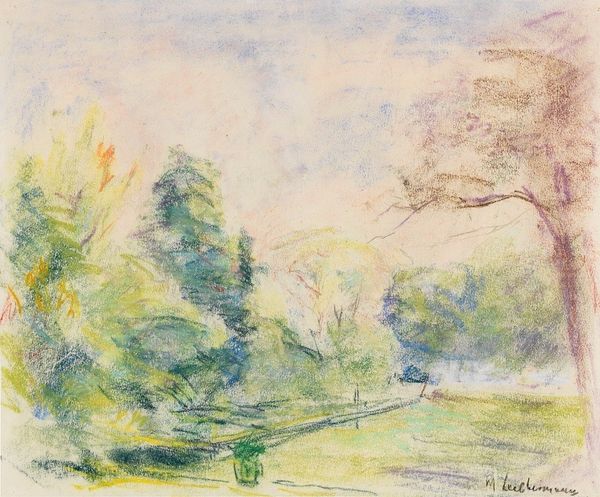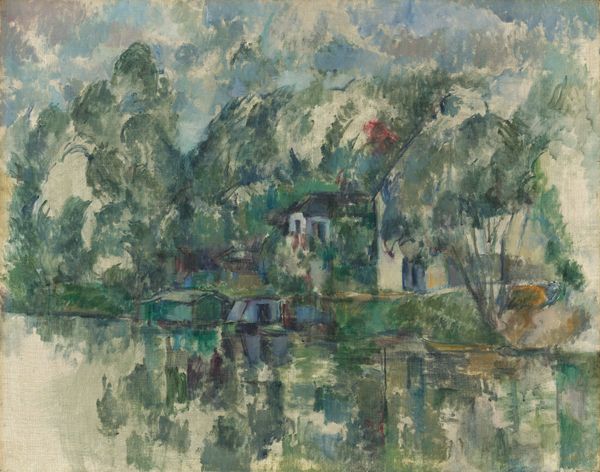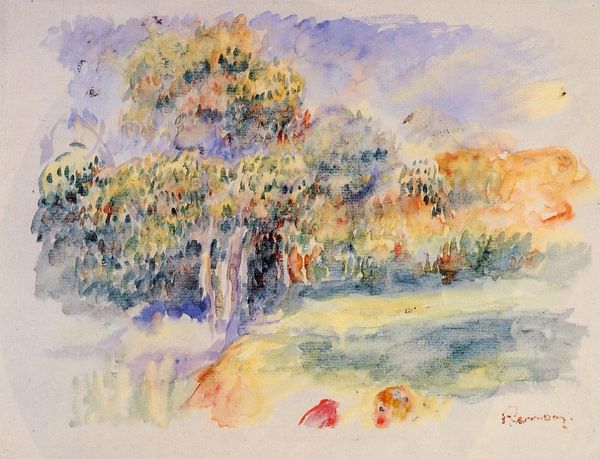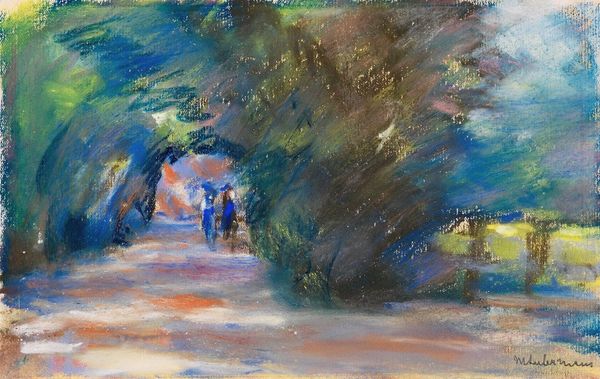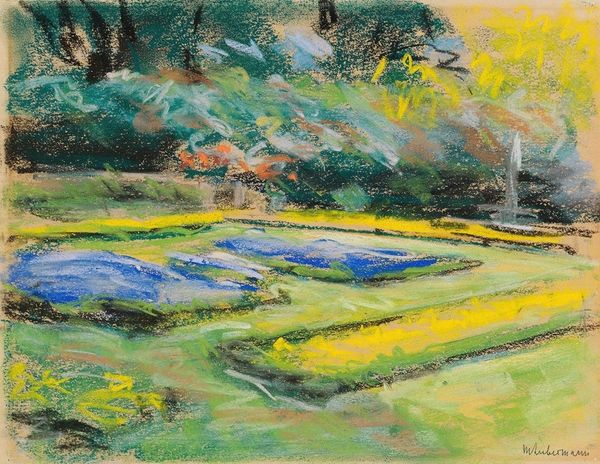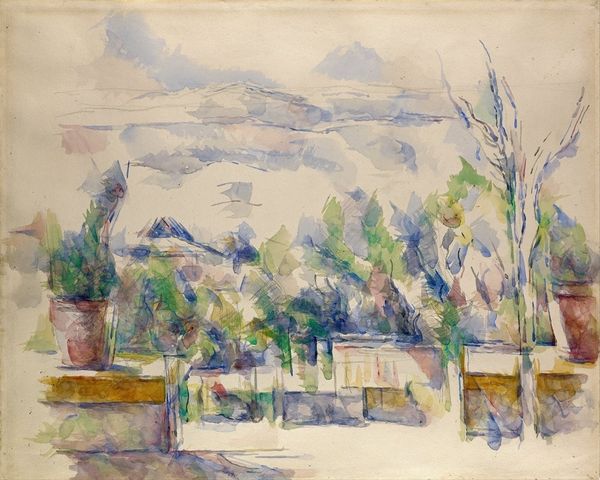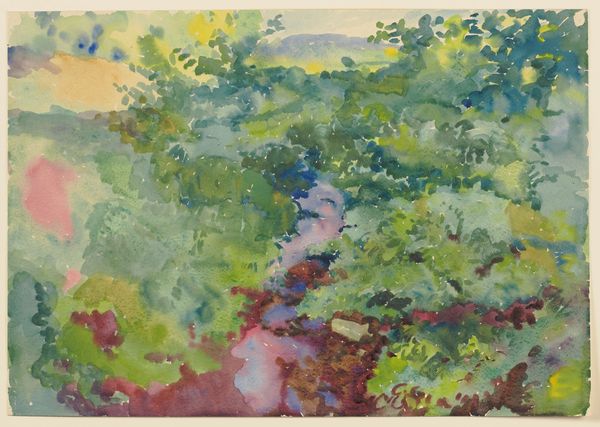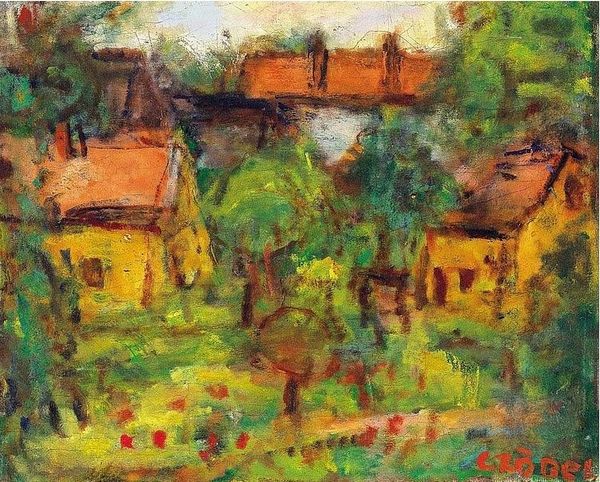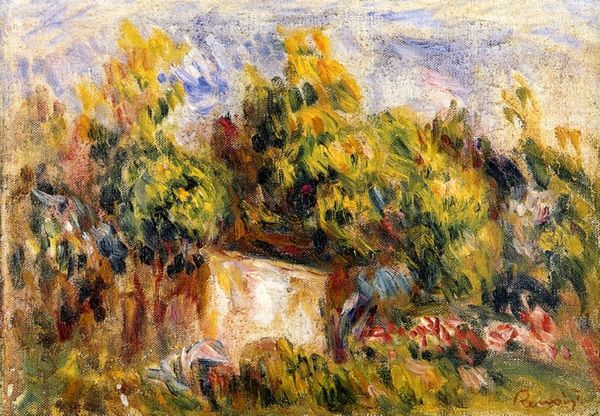
Copyright: Public Domain: Artvee
Editor: Here we have Max Liebermann's "Der Nutzgarten in Wannsee nach Suedosten," or "The Kitchen Garden in Wannsee, Looking Southeast," created in 1924 using pastels. It strikes me as a particularly tranquil landscape. What visual language stands out to you in this work? Curator: The garden itself is, of course, an ancient and deeply symbolic space. Consider the enclosed garden, the hortus conclusus, often a representation of purity, security, and controlled nature. Does Liebermann's rendering uphold or subvert that symbolism, would you say? Editor: I see that the garden appears less manicured than the ‘hortus conclusus’ suggests, lending it a naturalness, maybe even wildness, which I appreciate. The loose application of the pastel adds to the unconstrained impression. Curator: Indeed. Notice how the perspective leads the eye down the garden path, yet it terminates in ambiguity. There is a vanishing point that simultaneously invites and deflects penetration. The symbolism is complex here, inviting viewers to a sense of wonder at a domestic sphere. What sort of tension do you recognize in it? Editor: The garden is practical, implied by the title ‘Kitchen Garden,’ yet there’s an aesthetic and almost spiritual experience being suggested with the pastel medium and expressive strokes. It feels as though function and beauty are intertwined. Curator: Precisely. The symbolism is embedded in the cultural understanding of the domestic space in transition. What did you gain from this exchange? Editor: I’ve learned to appreciate the depth of meaning within what initially seemed like a simple landscape. Thank you. Curator: My pleasure. This garden reveals a narrative woven through colors, lines, and forms, enriching our understanding of how landscapes communicate meaning across time.
Comments
No comments
Be the first to comment and join the conversation on the ultimate creative platform.
